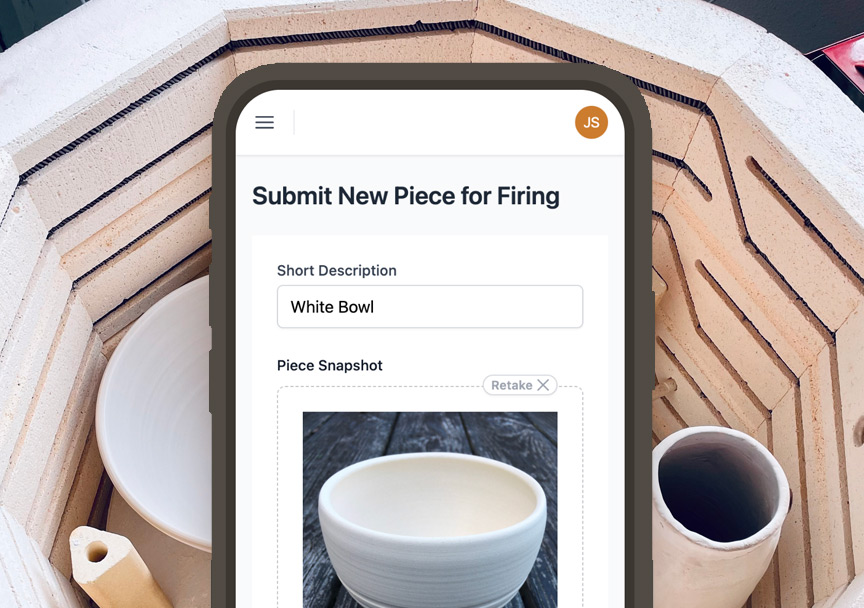Adding kids classes to your pottery studio schedule can be a great way to attract new students, engage with the community, and diversify your offerings. With some planning and preparation, kids classes can become a fun, popular and profitable part of your business. Here are some tips for successfully adding kids pottery classes to your schedule.
Choosing An Age Range
The first step is deciding what age groups you want to focus on. Most studios offer classes for elementary school-aged children, but you could also consider preschool ages or middle/high school. Think about what ages you're most comfortable teaching and which ages will work well in your studio space. Some factors to consider include:
- Attention spans - younger kids may do better with shorter class lengths.
- Motor skills - make sure projects are age appropriate.
- Safety - younger kids will need more supervision.
- Class timing - schedule classes when kids are available.
Many studios offer classes for ages 6-12 years old. Breaking this into smaller age groups, such as 6-8 and 9-12, can help tailor projects and teaching approaches.
Creating A Curriculum
Once you've settled on an age range, start brainstorming project ideas and mapping out a curriculum. Look for projects that meet kids' skills and interests. Pottery activities that involve sculpting with clay, hand-building, and applying glazes often appeal to younger artists. Having 3-4 core projects that you repeat each session works well for establishing routines. Supplement these with new projects regularly to keep kids engaged.
When planning your curriculum, include a mix of technical skill-building and opportunities for creativity. Teach fundamentals like wedging, centering, and finishing methods. But also incorporate free sculpting time for imaginative play. Having structured projects balanced with freeform creativity encourages a fun, low-pressure environment where kids can express themselves.
Setting Up Your Studio Space
To accommodate kids, make sure your studio setup addresses their needs. Have seating sized for kids at each wheel and workspace. Lower shelving and storage bins ensure supplies are accessible. Set aside an area for messy creative play with drop cloths or plastic tablecloths. Have small hand tools available, like doodling tools and rib tools. An open floor plan with ample room to move between stations works best.
Safety should also be top of mind. Tidy walkways prevent slips or falls. Chemicals and equipment like the kiln should have physical barriers. Review rules about not eating clay. Extra supervision is a must during class. Having an assistant, parent volunteers or teen aides will give you an extra set of eyes. A well-prepared space sets kids up for success.
When To Schedule Kids Classes
Finding the right time to offer kids classes takes some strategy. You'll want to schedule them when children are available, but also avoid conflicts with your existing classes. Here are some tips on the best times to schedule kids pottery classes:
The afterschool hours of 3-6 pm on weekdays is a popular time slot, especially for elementary school ages. At this time, parents are still commuting home from work and need childcare options. Classes later at night can work for older kids. However, be aware of keeping class lengths age-appropriate since younger kids get tired.
Scheduling on weekends is another good option when parental schedules are more flexible. Saturday mornings and early afternoons tend to be open on family calendars. Sunday afternoons also work if families want activities before the school/work week starts. Some studios even offer pottery birthday parties on weekends.
Avoid crowding your kids classes too close to your regular adult classes. The increased noise and commotion from younger artists can disrupt your other students. Leave buffer time in-between sessions or schedule kids during your down times. You want to accommodate families while also not negatively impacting your existing clientele.
Look at your studio schedule holistically when slotting in kids classes. Consult with parents to identify high-demand time slots. Promote the classes consistently once they're scheduled to hit enrollment targets. With smart scheduling and promotion, your new kids programming will flourish.
Promoting Your Kid's Classes
Spread the word about your new offerings to fill seats. Send mailers to neighborhood families. Promote classes on your website, social media, and via local parenting groups. Offer discounted trial classes or kid-parent duos. Reach out to schools, scouts, and community centers about field trips or special workshops.
Create enticing class descriptions that highlight the fun, creativity, and skills gained. Use engaging titles like "Clay Creations", "Mud Monsters", or "Junior Potter's Wheel" that appeal to the age group. Post photos of kids' finished pieces as social proof. Offer payment plans and discounts for multi-class sign-ups. Get the word out both digitally and with old-fashioned flyers.
Teaching Kids Effectively
Once classes start, focus on making clay enjoyable and keeping kids on track. Demonstrate techniques step-by-step. Remind kids of studio rules and safety measures - they require more repetition. Break projects down into simple chunks. Let younger kids change projects if interest wanes. Regular praise and encouragement, rather than criticism, keep motivation high.
Give them independence tailored to their skills. Avoid being too rigid. Allow creativity to flourish by letting them make something new if the initial project isn't working out. Stay flexible and adaptive to each child's needs. Your patience and attitude set the tone for their experience. Make pottery fun above all else!
Adding kids classes requires adjustments but brings huge rewards. Their excitement in learning this craft makes the extra effort worthwhile. Follow these tips to successfully add kids pottery classes and make clay a beloved hobby for the next generation of young artists in your community.


